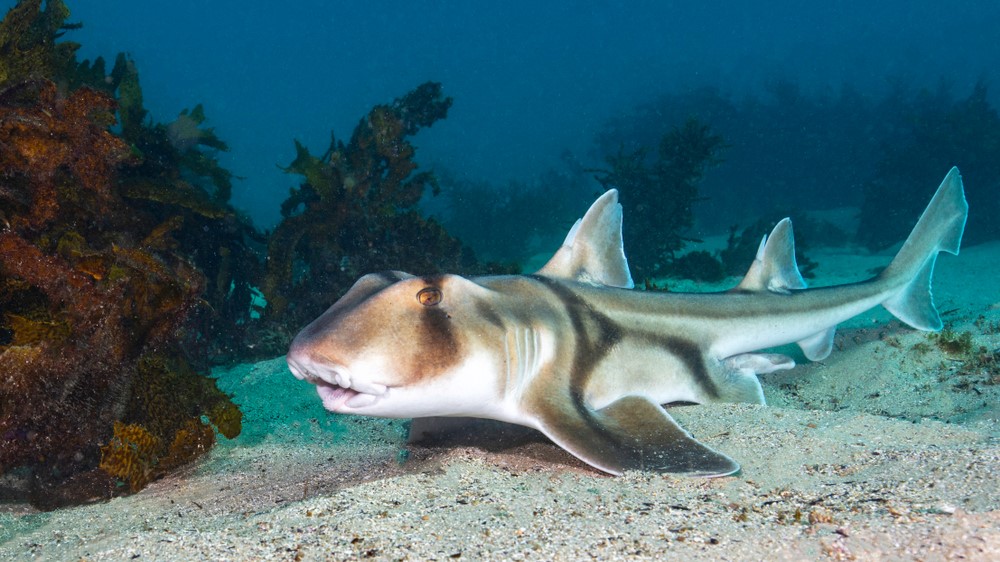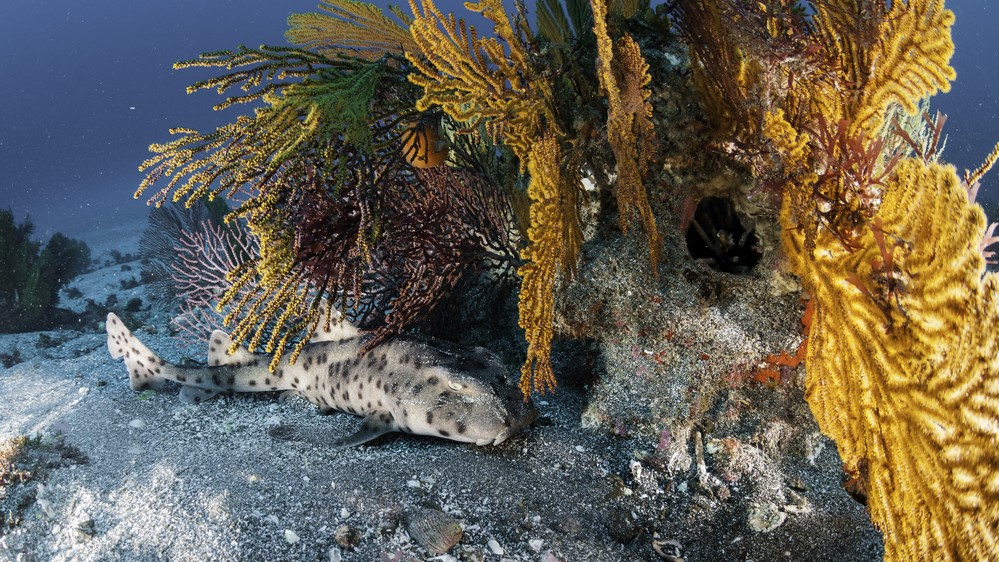Sharks do actually sleep, and sometimes with their eyes wide open
It is the first real evidence that sharks actually get some "shut-eye."
Researchers have finally put a long-standing shark mystery to bed by showing — for the first time — that the oceanic predators do sleep. However, unlike humans and most other animals, these weird fish can doze off with both eyes wide open.
In the new study, published online March 9 in the journal Biology Letters, Michael Kelly, an ecophysiologist at The University of Western Australia, and colleagues measured the metabolic rate, or how much energy is burned at a given time, in draughtsboard sharks (Cephaloscyllium isabellum). It turned out that the creatures frequently entered a restful state to conserve energy; generally, when this restfulness lasts more than five minutes, researchers describe it as sleep.
"We have provided the first physiological evidence of sleep in sharks," the researchers wrote in the paper. The finding could open the door to studying sleep in other shark species and even provide insight into how our own slumber has evolved, they added.
Related: Aahhhhh! 5 scary shark myths busted
The team also looked for other physical indicators that the sharks were sleeping. They found that the sharks adopted a flat and rigid body posture while dozing off and that they could even sleep without closing their eyes.
Measuring metabolism
Animals from all across the animal kingdom sleep, suggesting that this behavior emerged early in evolutionary history. Sleep likely evolved because it allows animals to conserve energy, the researchers wrote.
"Energy savings during sleep have been reported in diverse animals, including humans, cats, rats, birds and fruit flies," the researchers wrote in the paper. But scientists weren't sure whether most fish slept too.
Get the world’s most fascinating discoveries delivered straight to your inbox.
Some sharks are known to go into a restful state where they stop swimming and stay in one place, which could be done to conserve energy and hints that they sleep. But no one had explicitly measured sharks' metabolic rate during these restful periods.
In a 2020 study published in the Journal of Sleep Research, Kelly and other researchers showed that draughtsboard sharks and Port Jackson sharks (Heterodontus portusjacksoni) require stronger electrical stimulation to react when in this restful state. This result strongly hinted, but could not conclusively show, that the sharks were sleeping.
So, to strengthen the case, in the current study, the researchers monitored draughtsboard sharks' energy consumption over a 24-hour cycle. To do this, the researchers captured seven draughtsboard sharks off the coast of New Zealand and kept them in specialized flow-through tanks, which continuously pump water through a chamber allowing the sharks to swim in place. The sharks were then exposed to 12-hour light and dark cycles to mimic day and night and were left to acclimatize in their new environment before the experiments began.
During the experiments, the researchers monitored the oxygen levels in the water. Sharks, like humans, use more oxygen when they are burning more energy via respiration, so falling oxygen levels in the water revealed the metabolic rate of the sharks.
The team found that the fish used significantly less oxygen during these restful periods, especially when those periods lasted longer than five minutes, which suggests this is when sleep really kicks in. Previous research has suggested that draughtsboard sharks are nocturnal, the researchers wrote, but the team's new findings showed that they actually sleep for short periods throughout the day and night.
Sleep indicators
After confirming that the sharks were sleeping, the team looked for physical traits that could be used as potential indicators of sleep in other shark species.
The researchers identified the most obvious indicator of sleep, other than metabolic activity, to be a rigid, flat body posture while the sharks rested. During the day, the sharks displayed this posture much more while resting. "This might suggest that animals fell asleep faster during the day," the researchers wrote in the paper.
In most other animals, one of the most reliable indicators of sleep is when an animal closes its eyes for a prolonged period. However, draughtsboard sharks sometimes kept their eyes open during sleep.
When the sharks slept during the day, they almost always had their eyes closed. But when they slept at night, the sharks had their eyes open around 38% of the time. "This suggests that eye closure is more likely associated with an external factor, such as the presence of light rather than sleep," the researchers wrote in the paper.
Do all sharks sleep?
Not all sharks can sleep. Only sharks capable of buccal pumping — a process that involves pumping water over the sharks' gills to ensure a fresh supply of oxygen — can stay in one place. For example, larger sharks must move continuously to pump oxygen-rich water over their gills, according to the paper. However, the new study suggests that sleep is probably found in most shark species, the researchers wrote. Exactly how they sleep, though, is likely to vary among different groups.
Great white sharks (Carcharodon carcharias), for instance, cannot enter a restful state to sleep and must continue to swim or risk running out of oxygen. But if smaller sharks like draughtsboard sharks need to sleep, then it is highly likely that great white sharks would need to sleep too.
An older study, published in 1977 in the journal Brain Research, showed that in the shark species spiny dogfish (Squalus acanthias), the nerves used to coordinate swimming movements were located in the spine and not the brain. This might suggest that larger non-buccal pumping sharks might actually be able to have their brains resting or sleeping without having to stop swimming, but more research is needed to confirm that hypothesis.
The researchers also hope that the new study can help answer questions about how and when sleep evolved in other animals, such as humans, because sharks are some of the oldest vertebrates and diverged from humans at least 440 million years ago, according to a fossil of a common ancestor between humans and sharks found in 2018, Live Science previously reported.
"Sharks represent the earliest group of jawed vertebrates and, therefore, may provide original insight into the evolution of sleep in vertebrates," the researchers wrote in the paper.
Originally published on Live Science.

Harry is a U.K.-based senior staff writer at Live Science. He studied marine biology at the University of Exeter before training to become a journalist. He covers a wide range of topics including space exploration, planetary science, space weather, climate change, animal behavior and paleontology. His recent work on the solar maximum won "best space submission" at the 2024 Aerospace Media Awards and was shortlisted in the "top scoop" category at the NCTJ Awards for Excellence in 2023. He also writes Live Science's weekly Earth from space series.






